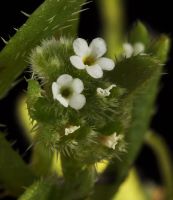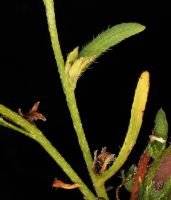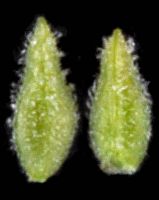Distribution: Occurring chiefly east of the Cascades crest in Washington; Washington to Baja California, east to the Rocky Mountains and northern Great Plains.
Habitat: Moist clay flats and beds of drying pools; tolerant of alkali.
Flowers: April-July
Origin: Native
Growth Duration: Annual
Conservation Status: Not of concern
Pollination: Bees, flies
Tap-rooted or fibrous-rooted annual, subglabrous, with several or many prostrate stems 5-25 cm. long from the base.
Leaves linear or linear-oblanceolate, the lower up to 6 cm. long and 5 mm. wide; mostly alternate, but 1 or more pairs near the base opposite.
Stems commonly floriferous to near the base, each forming a loosely-flowered false raceme that may be irregularly leafy-bracteate below; calyx 4-7 mm. long, the 5 linear calyx lobes directed toward the same side of the fruit; corolla white, minute, the limb only 1-2 mm. wide.
Nutlets lanceolate, 1.5-2.5 mm. long, rough, often with minute bristles
Publication: Contr. Arnold Arbor. 3: 38. 1932.
PNW Herbaria: Specimen records of Plagiobothrys leptocladus in the Consortium of Pacific Northwest Herbaria database
WA Flora Checklist: Plagiobothrys leptocladus checklist entry
OregonFlora: Plagiobothrys leptocladus information
E-Flora BC: Plagiobothrys leptocladus atlas page
CalPhotos: Plagiobothrys leptocladus photos
























